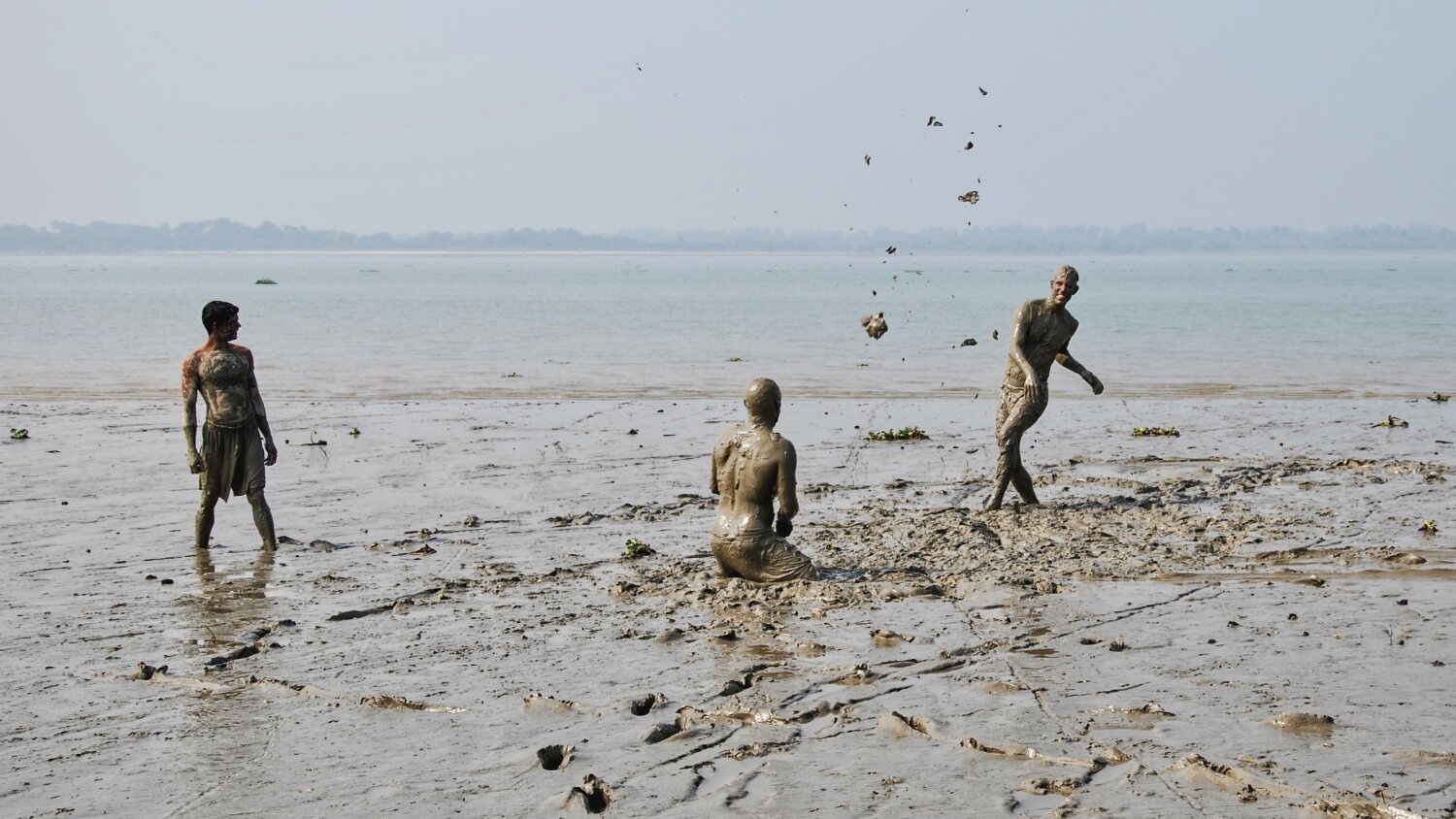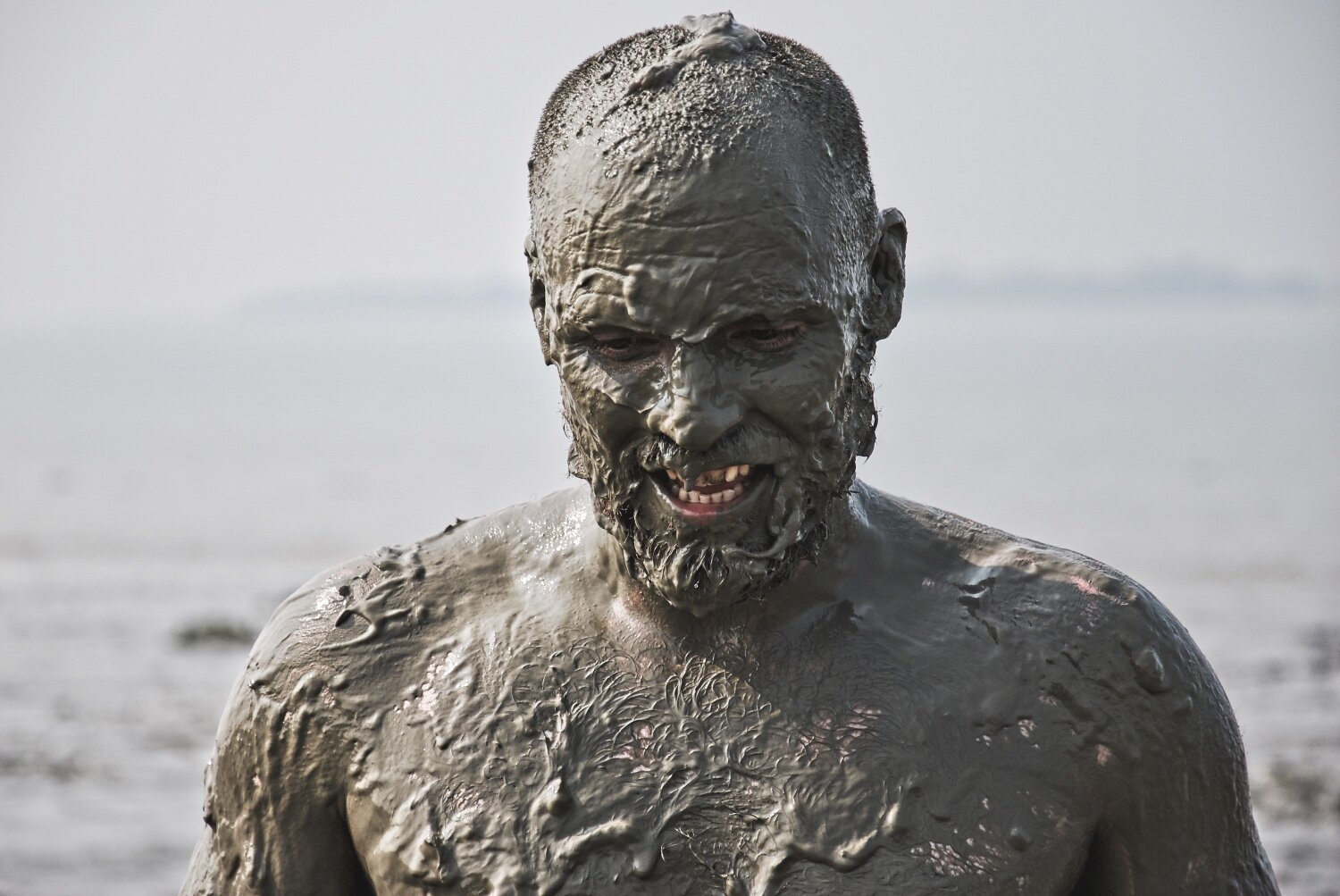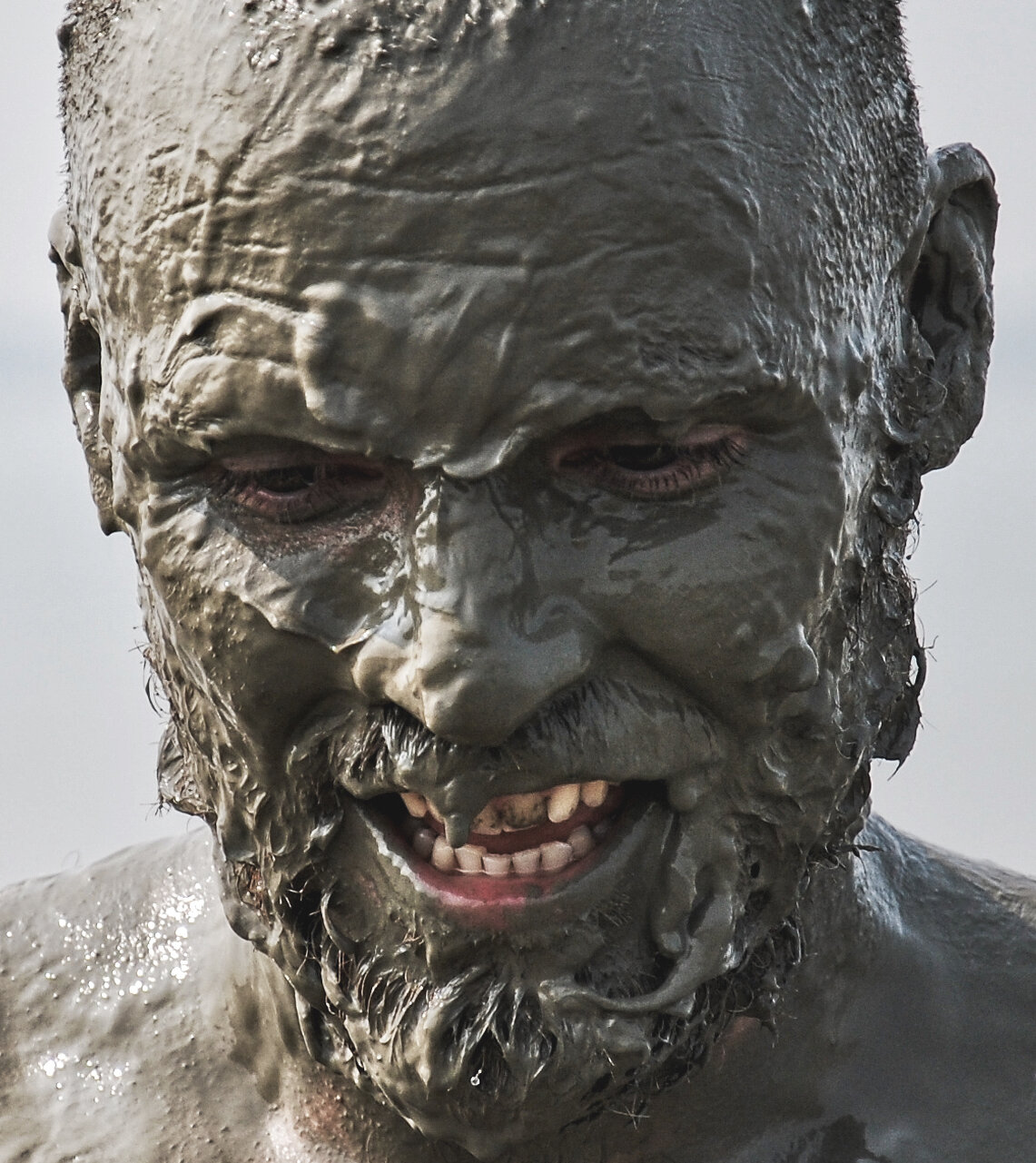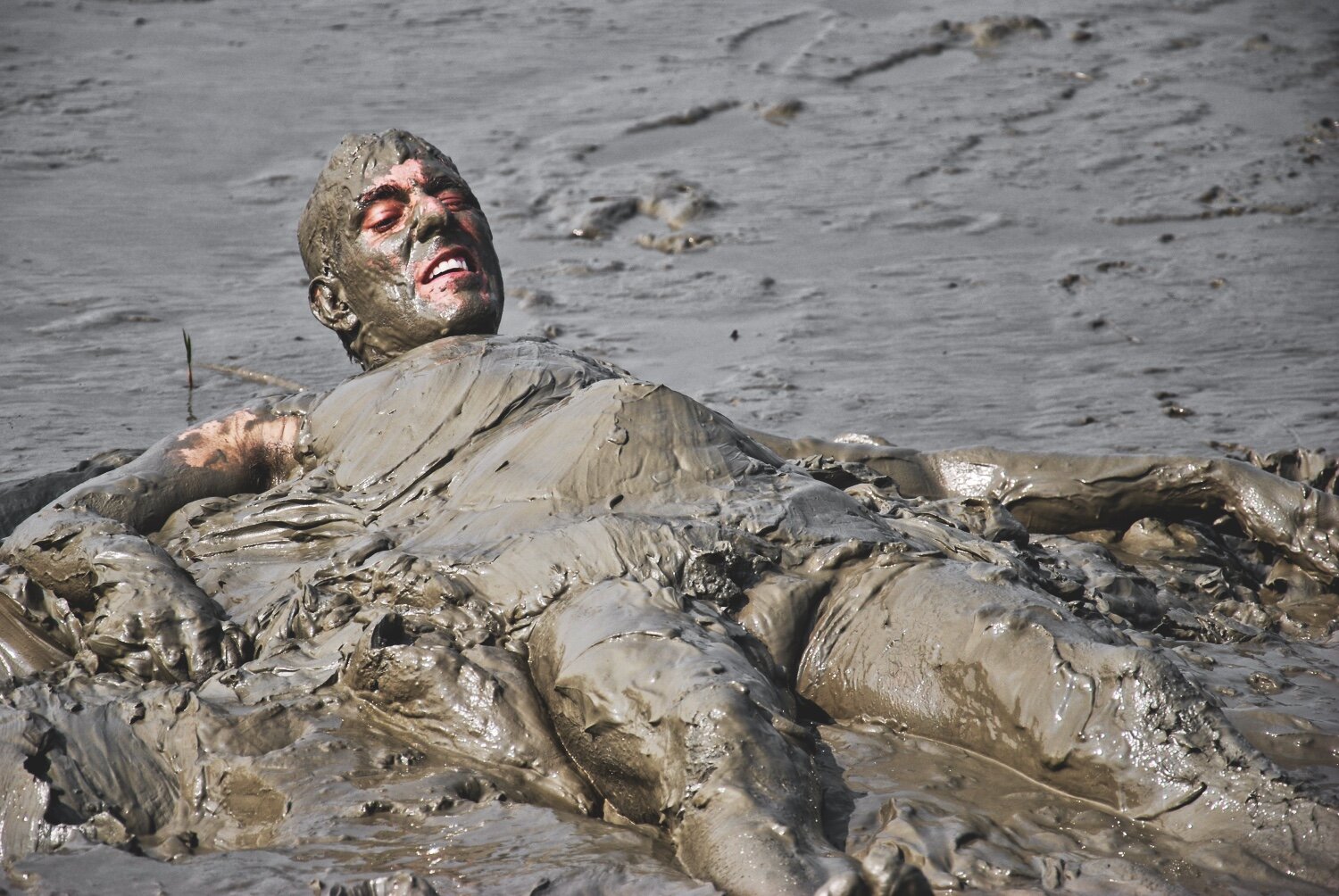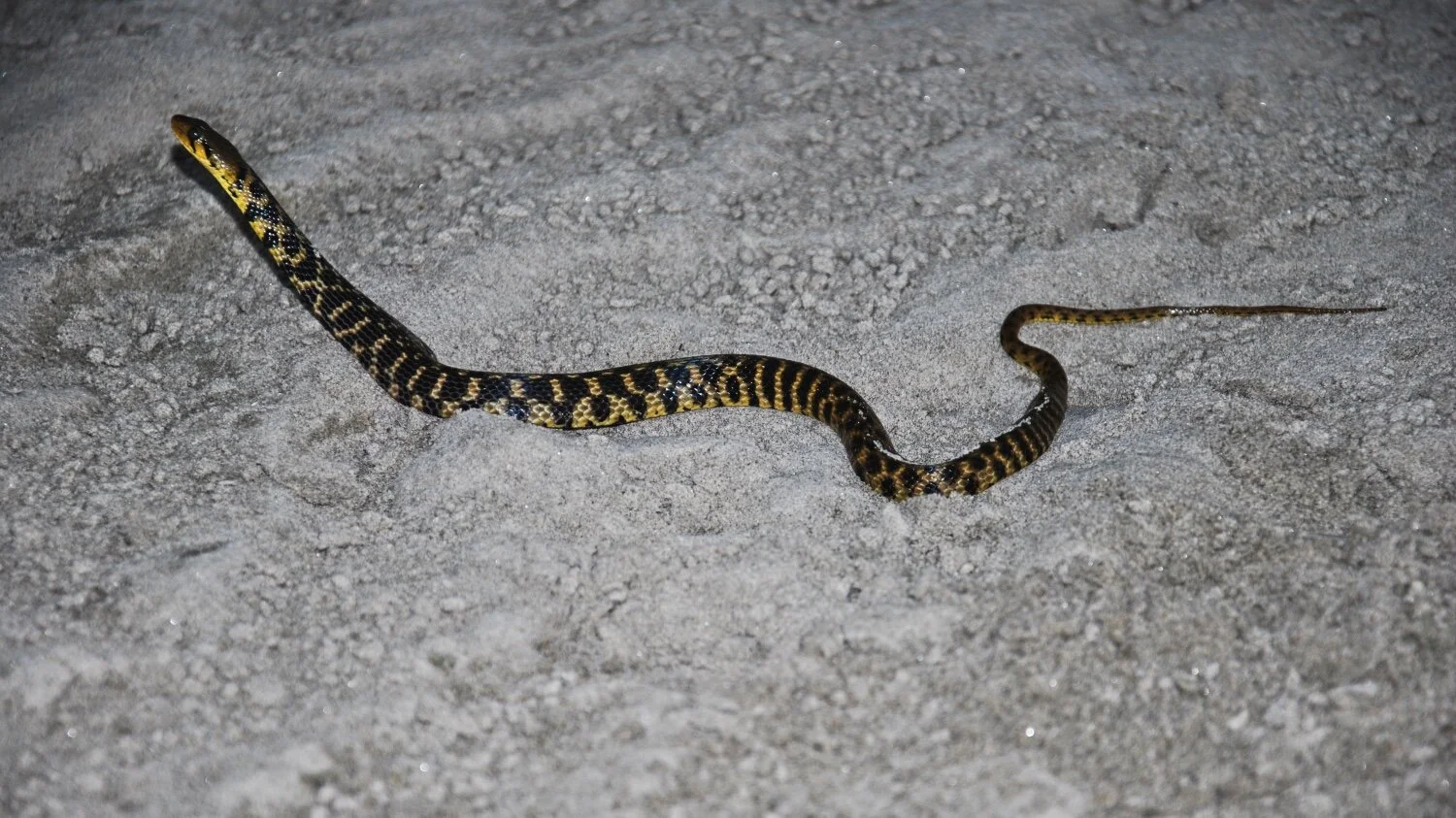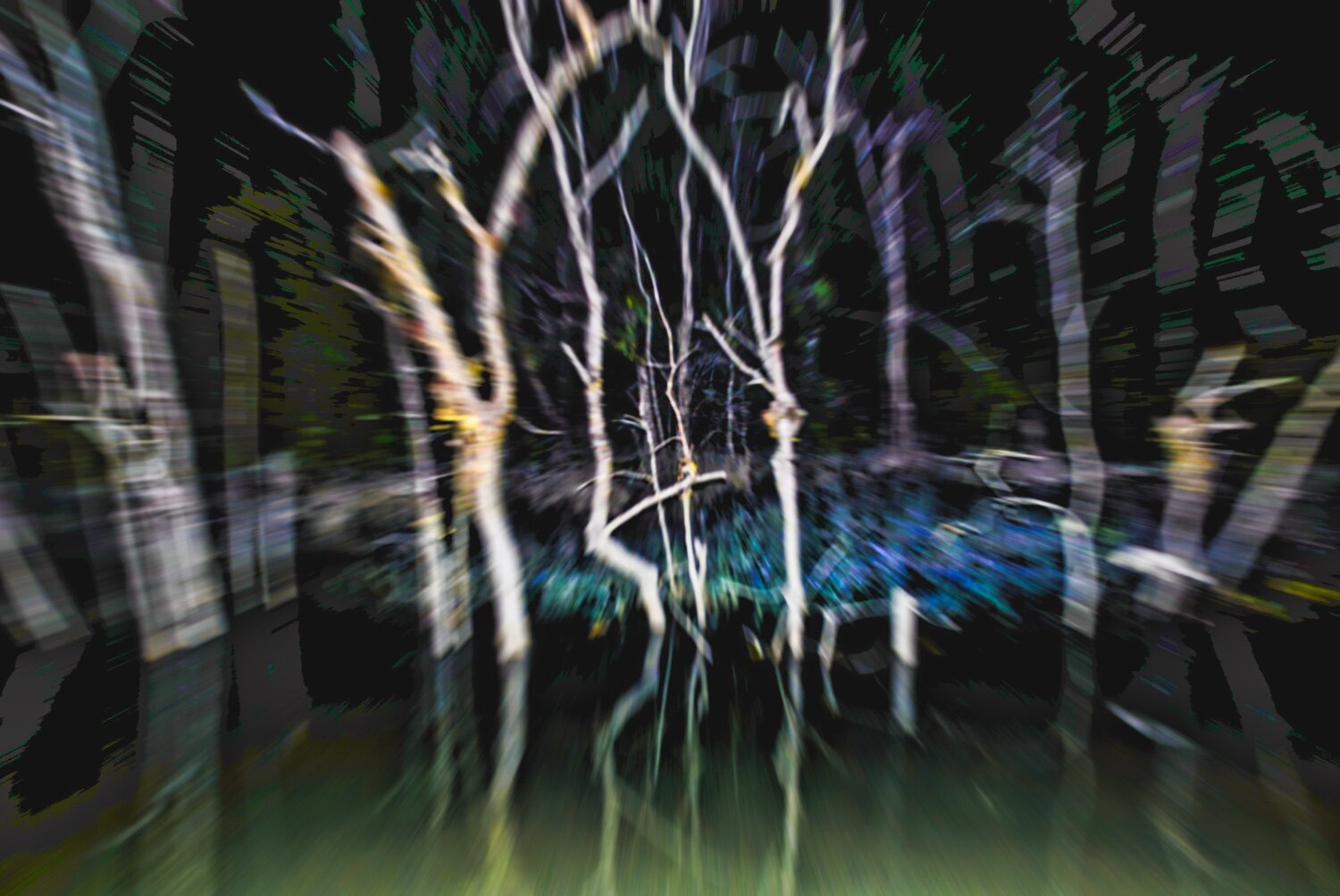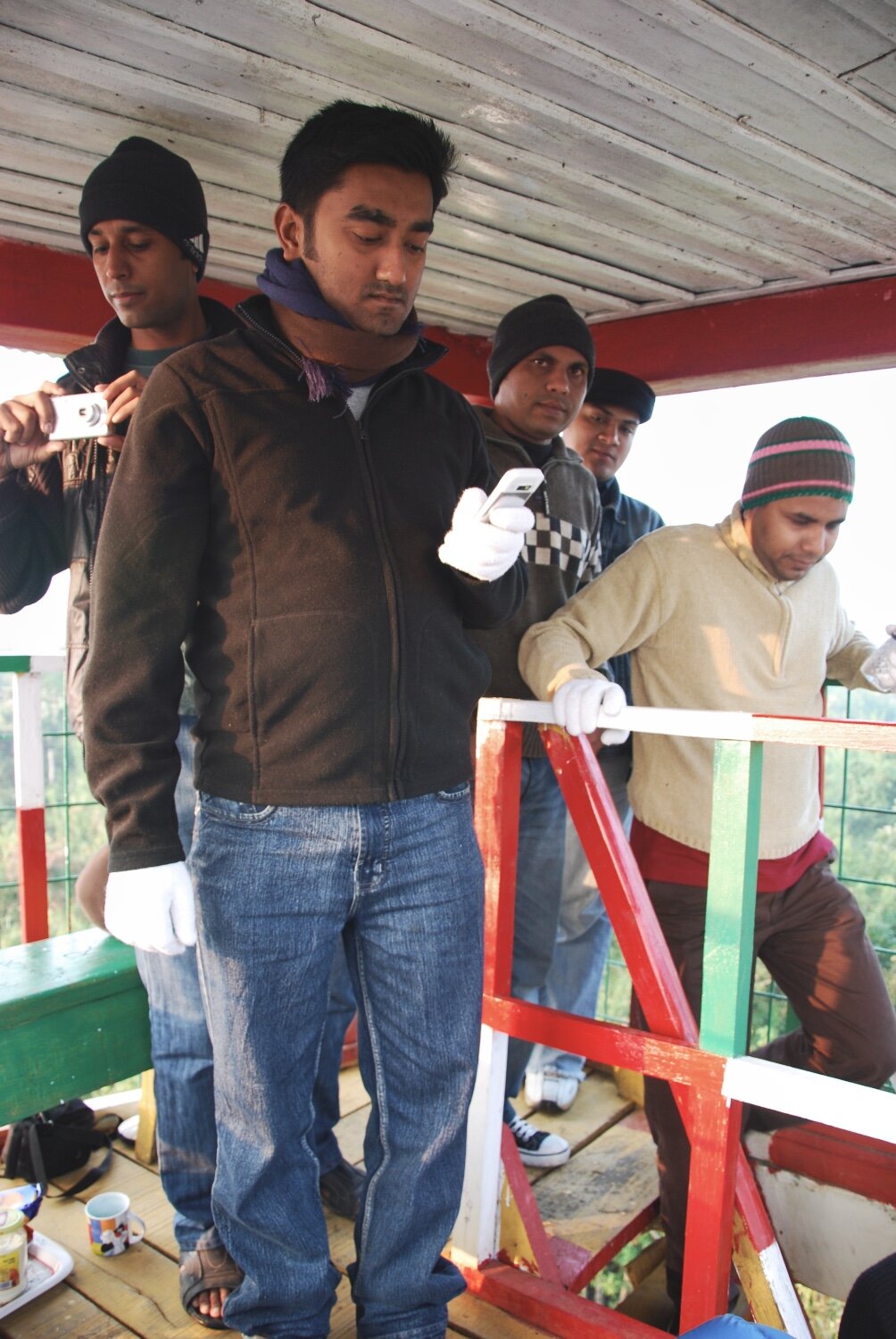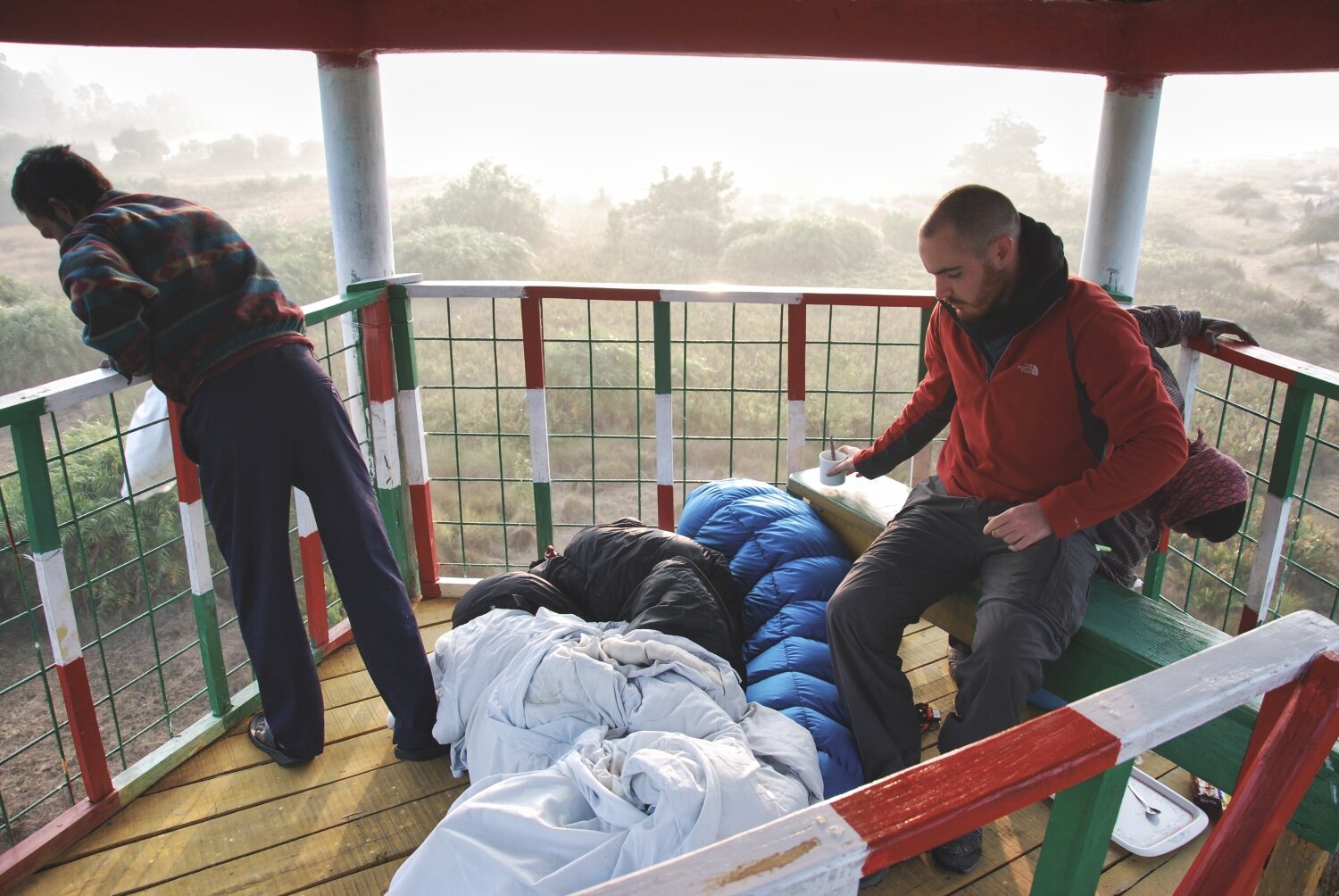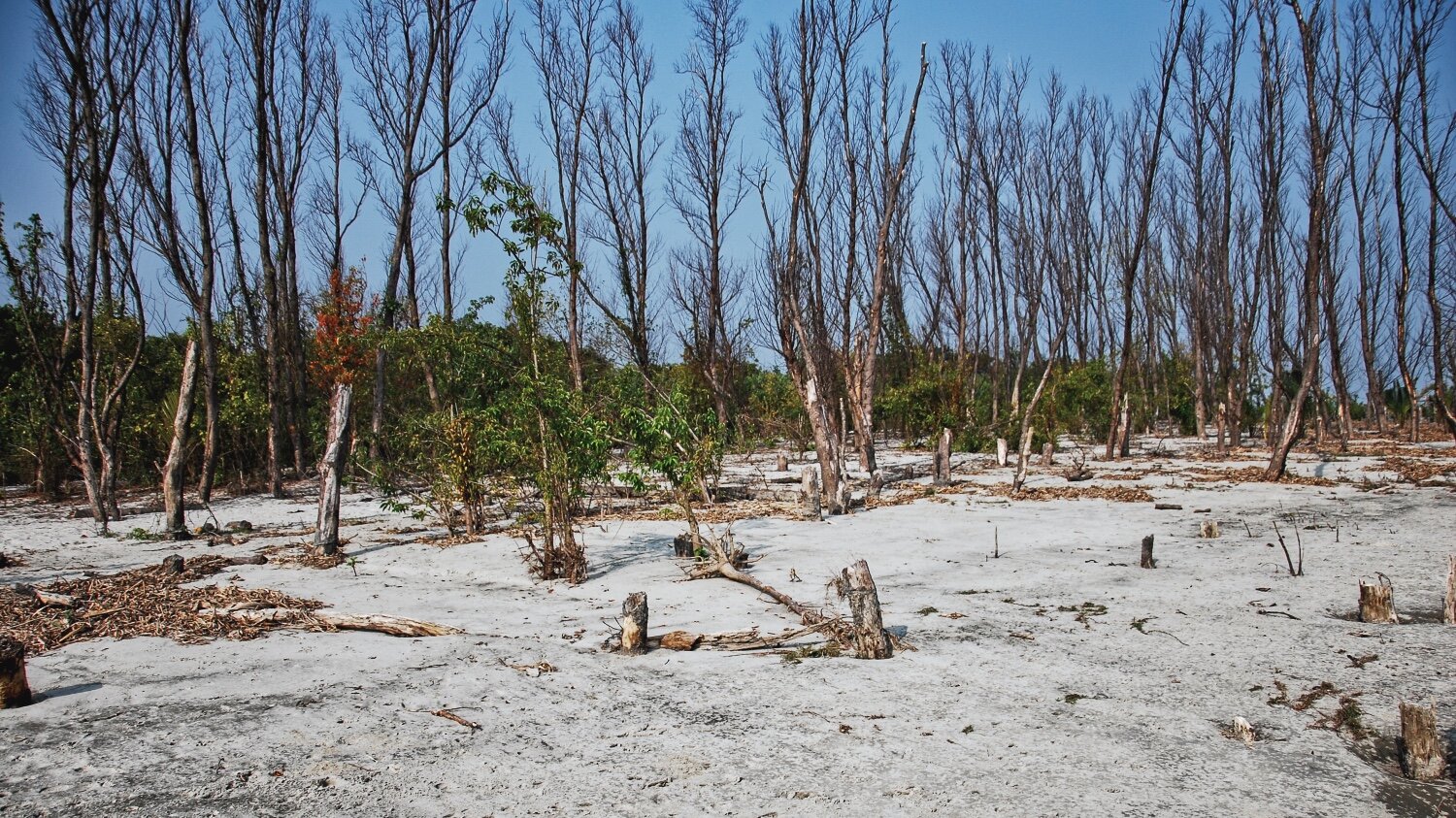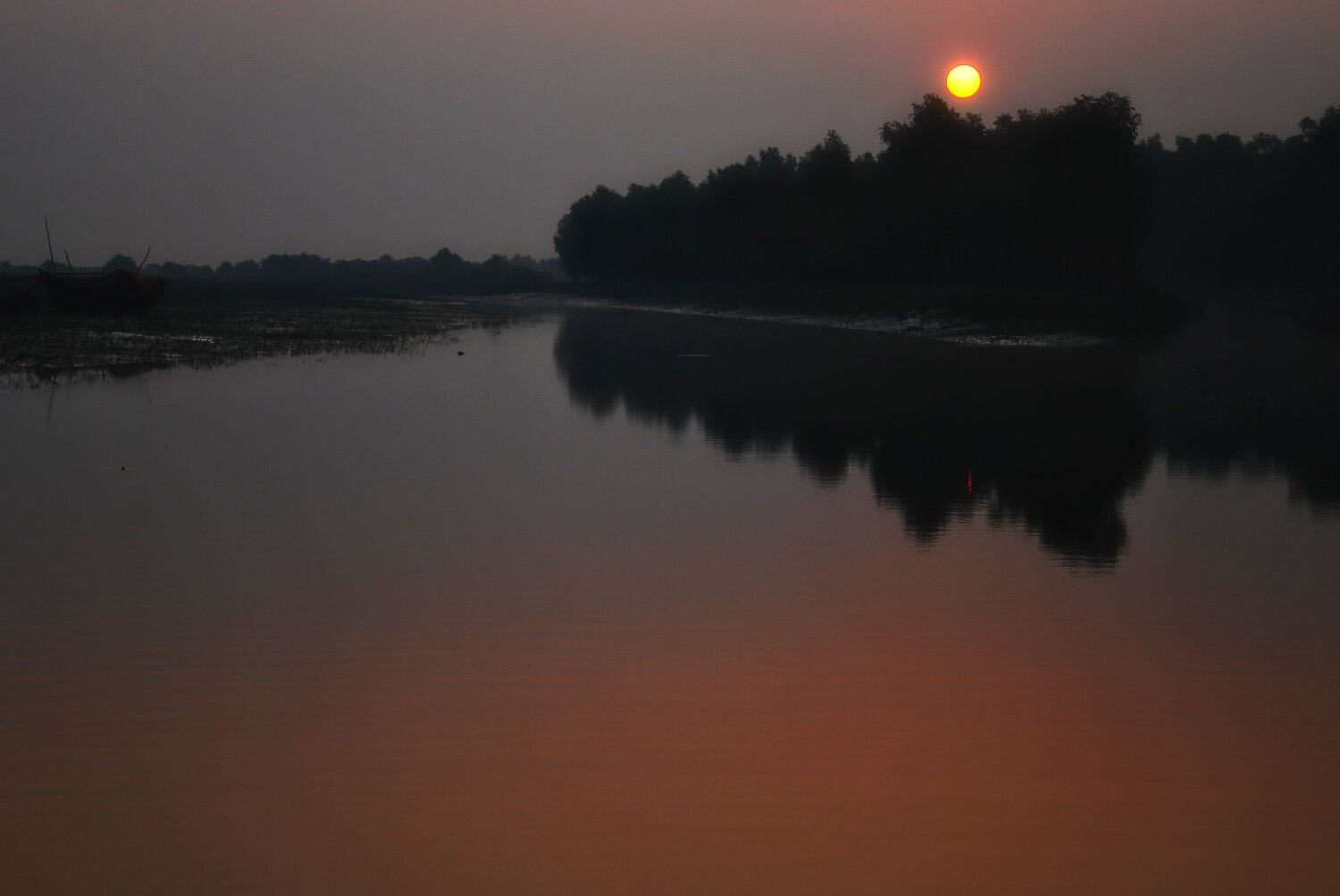105 - I'm Hungry Over Here! (Sundarbans, Bangladesh)
WE SLEPT WELL IN THE TOWER, thoughts of sugarplums (i.e. Panthera tigris) dancing in our heads. A cool mangrove breeze, warm sleeping bag, and the thrill of adventure were a veritable organic Ambien for mind and body. Short but sweet was our elevated repose.
While breakfasting back on the Emma, a wooden boat with what appeared to be half the population of Bangladeshi men disembarked at the dock leading to the tower. This stoked our curiosity and made us eager to start the day. We were soon in pursuit. We’d be taking the trail to Jamtola Beach, which we’d then follow up the coast to the Kochikhali forest station.
At the beach, we encountered the battalion of men we’d seen earlier, now in the midst of a cricket match. They were employees of a Bangladeshi clothing manufacturer on a company retreat. Our arrival disrupted the festivities. Alex set up his video camera and was inundated with requests for photos and handshakes. I, too, had an entourage jostling for photos.
They were shy at first. Instead of asking, one guy would sneak up beside me while a co-conspirator snapped a photo on his phone. When it was clear I was amenable to photographs, verbal requests followed, which turned into a steady stream. A little taste of stardom. They shot us. We shot them. All enjoyed the exchange. This brought back memories of my Indonesian sojourn.
After our glamour shoot, we continued along the coast, an alluring stretch of beach made all the more resplendent by solitude. We saw no one else. Protruding tree trunk husks, an empty sea, and biological detritus gave the scene an aura of apocalypse. Add tiger tension (i.e. the presence/threat of feline marauders) and you have an exhilarating morning safari. Heeeeeere, kitty, kitty, kitty. Come out, come out wherever you are…
The tiger tension was real. We discovered recent kitty cat tracks intermixed with many a deer and boar hoof print. Heeeeere, kitty, kitty, kitty. Nice kitty, kitty. I spotted a giant otter patrolling the waters near shore, but it retreated quickly. There were birds and an occasional boar sighting, but no El Tigre. The beach served as a sort of tiger highway. If only we could’ve managed a walk during rush hour… or maybe not. We arrived at Kochikhali just before lunch.
The afternoon brought a Sundarbans MudFest on the shore of a nearby island. As the tide recedes, the mud appears. Not just any mud. Perfect mud. Perfect for sliding, throwing, painting one’s body, burying one’s head, eating, wearing as a hat, mud-skipping, packing it in one’s ear, blinding oneself, making mud angels, flexing mud muscles, being dragged by a small Bangladeshi man, stomach racing, taking homoerotic “we’re on a gay mud wrestling holiday” photos, so on and so forth.
We did what many pay a psychiatrist hundreds of dollars to achieve: childhood regression (five or six years of age, in my estimation). At one point, my fellow mud-skipper blinded himself after submerging his head in the slime. I became his caregiver, forced to escort him by the arm to the water’s edge. This would explain the suggestive photo of Slappy and Slick walking hand in hand. Slight ass crack prominence cements the image.
After an exhausting swim against the current, the cleansing began. Although most of the mud washed away before we reached the boat, I still had some packed in places I thought watertight. Our skipper was a fascist about boat cleanliness (not a bad thing), requiring extra thoroughness. One of the more awkward aspects of this trip was the insistence by a crew member (the country boat owner) on cleaning our feet. Having a Bengali man scrub my toes as if part of the royal family was uncomfortable. After a constant string of, “No, no, you don’t need to do that” or “That’s okay, I’ve got it” or “No really, not necessary,” I threw in the towel and let it happen. I was never sure if he was obscenely accommodating or insanely fastidious about two filthy yodels mucking up the ship. Even after I was clean, I still felt dirty, albeit a different kind of dirty. After we doffed our mud-skipping skivvies, he scrubbed them as well. Alex summed up our collective shame when he looked at me and said, “Pretty grim.” Pretty grim, indeed.
Afterward, we returned to the island for another beach patrol. The Sundarbans is nothing if not dynamic. A constant reshaping occurs through tidal action and sediment deposit. The island is around 45-50 years old, the result of this allivium transition. Although it has a name (Pokhkhir Char), I dubbed it Tiger Island. If local gossip had any validity, at least five tigers lived on an island no more than sixteen square kilometers. Four of the five were reputed to be a mother and three cubs. Judging from the number and size of pug marks, I was inclined to believe the hype. The abundance of prey also supported the claim.
So, on the afternoon of the third day, we again probed the coastal sands, scanning the forest’s edge for Khan and company. Though Alex and I possessed an unrelenting desire to see kitty close up, we were ambivalent. If we did, it’s because she wanted us to, and that might be bad in a “careful what you wish for, asshole” sort of way. After all, she had four kids to feed. Rashid, our guide, wasn’t conflicted. He had no wish to meet any, more than happy when we struck out again.
I did see something dart through the forest, but it vanished. It was likely a deer, although deer usually make more noise when startled. This creature disappeared without a sound. Was that you, Mr. Khan?
For the second night in a row, we slept on the top platform of the watchtower near the Katka forest station. The results were much the same, though we saw an unidentifiable shape move through the full-moon twilight. Tiger? Maybe. It could’ve been a unicorn for all we knew (probably easier to find one). Had it shown itself again, we would’ve illuminated the area. One more night all along the watchtower with only a blissful night’s sleep in our favor. There are worse tragedies.
We awoke to discover yet another large group of Bengali men making their way along the trail. Of course, their first stop was the tower. The fact we were still in our sleeping bags and occupying most of the platform did nothing to deter photos. One was so anxious, I requested he give me a moment to put on pants. Even before I’d extricated myself from the bag, the session began. They were exceedingly friendly, apologizing profusely for the disturbance. (Hardly necessary given our monopolization of space.)
We were rescued, in a manner of speaking, by our faithful crew when they arrived to help carry our things. On the way back, we inquired as to a strange guttural 'aaawwww' sound originating from the forest all morning. We were shocked to learn it was none other than Mr. Khan himself. Rashid said that’s the sound a tiger makes when it’s hungry, the subtext being, “Let’s not tempt fate.”
Hungry?
So let me get this straight. When a tiger wants food it makes a loud 'aaawwww' sound, ensuring all prey within a few hundred meters knows certain death lingers nearby? I’m no zoologist, buuuuut…
Why not stand on two paws and scream, “Yoo-hoo. I’m hungry over here. And I’m coming to take you away, ha, ha. Grrrrr, mother fuckers, grrrrr.”
Ah, don’t think so. Our guide was nervous or didn’t have the patience to watch us crawling through the underbrush. I imagine he created a preposterous explanation to curb our enthusiasm. It worked. We concluded it was too early in the day to get eaten by an enormous cat. Naughty guide. Khan wasn’t trying to attract food, he was trying to spark romance. I discovered this with subsequent research. On the boat, we heard the sound again, this time from a different direction. We later surmised we’d been privy to feline flirtation, jungle style. So close, yet so far away… grrrrr.
After breakfast, it was back to Tiger Island where we manned the small boat and explored a shallow interior channel. Low tide forced a withdrawal, so we settled for an extended walk along its perimeter. More forlorn coastline and few signs of humanity, but plenty of tiger tracks. We conducted brief forays into the forest and walked as far as we could before grassy marshland forced a retreat. Sure, tiger-spotting was our aim, but it was hard to be disappointed. The journey is the destination, is it not? Tiger or no, the place is worth a look.
On our walk back, we engaged two fishermen with interesting tidbits about Raju the Pirate. One was employed on a new ship recently seized by brigands. The owner made a direct plea to Raju (via cell phone) about this grave injustice. (Perhaps the owner had signed a pirate concord?) Raju agreed stealing a new boat was a bridge too far, so he “reacquired” the vessel and returned it. I guess Raju (or should I say Robin Hood?) has a conscience. Warms the cockles of thy heart, does it not? We asked if this fisherman had Raju’s number, or if he could contact him. He said it was possible, but the number was in his other phone, and he wouldn’t be returning home for two more days. He wrote our guide’s number and said he would call. The prospect of interviewing a pirate was most intriguing but, alas, we never heard from our liaison.
Upon returning to the country boat, we found the boatman asleep amid low tide, stranded in a sea of mud. We opted to walk a bit further out to the Emma, though doing so entailed an arduous slog and some wading. We spent the night near the forest station at Kochikhali. The next day we’d give the narrow channels another shot, this time at high tide. Heeeere, kitty, kitty, kitty. Niiiice kitty, kitty.















